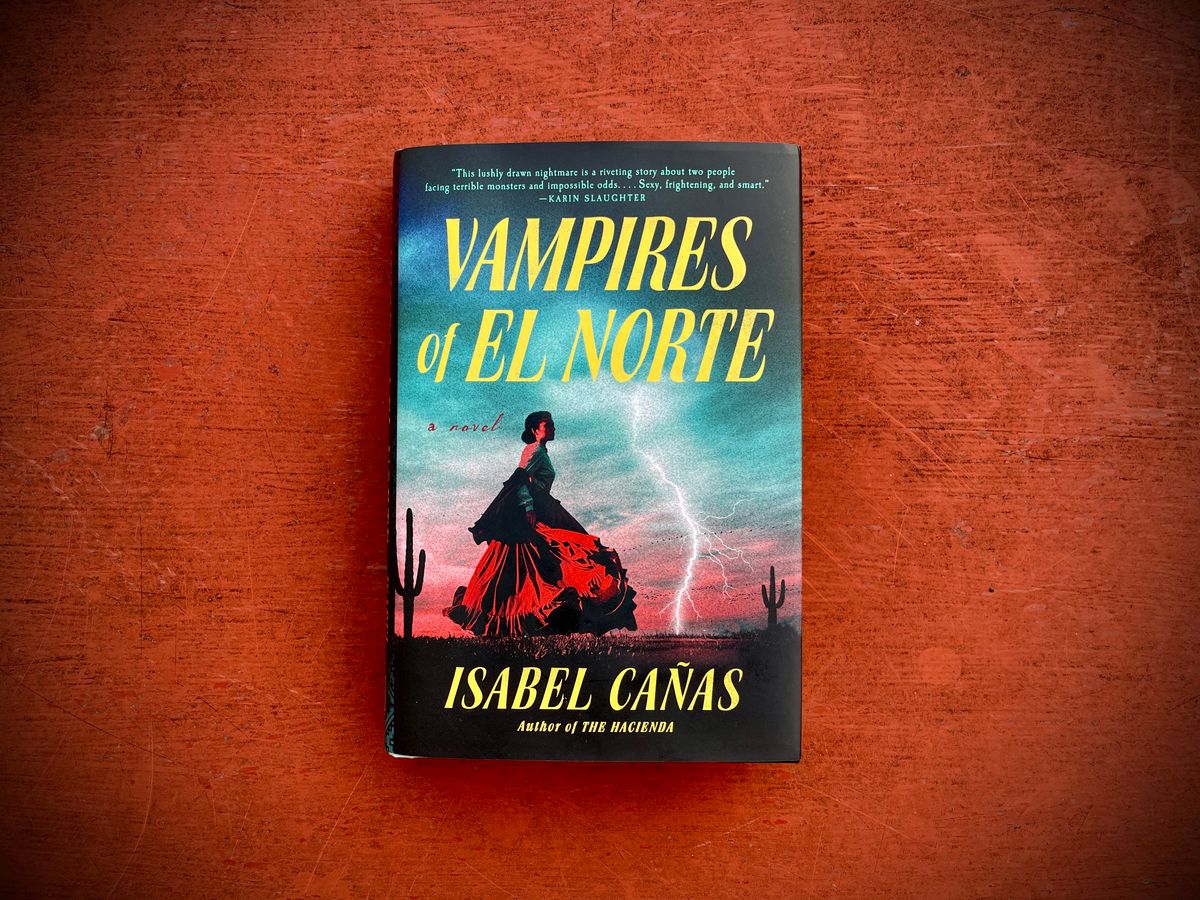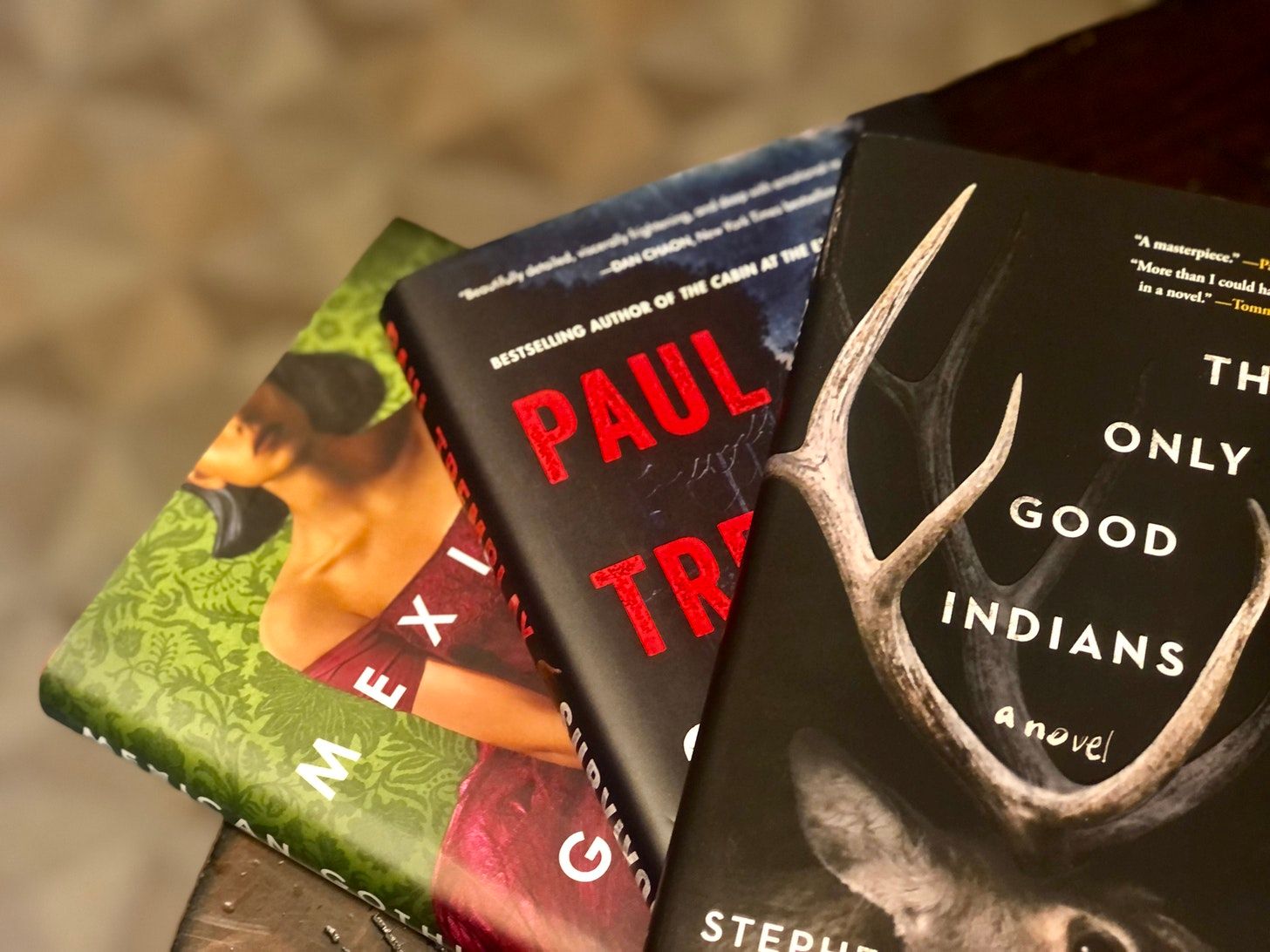Monsters on the western frontier
Isabel Cañas's Vampires of El Norte is the perfect spooky read this October

The US expansion into the western reaches of the continent isn't something that we're taught much about in school. Most of the stories that I remember are heroic settler stories along the lines of Laura Ingles Wilder's Little House on the Prairie series, the Oregon Trail computer game, and the old Disney film Davy Crockett, King of the Wild Frontier. Those stories portray the journey out west as a heroic, exciting endeavor, one that brought civilization to the frontier, perfectly captured by John Gast's 1872 painting, "American Progress".
It took some upper-level history courses in college and in high school to shake that narrative a bit. The west is coated in the blood and the bodies that those settlers trampled over, aided by a government willing to brutally colonize the continent, and stories that helped us look away. It's a legacy that we're still grappling with as a nation, aided by new research, scholarship, and writers willing to take a look at that history from another angle.
Isabel Cañas' latest novel Vampires of El Norte is a story that exemplifies the horrors of this era, joining other post-colonial horror reads like Silvia Moreno-Garcia's Mexican Gothic and Stephen Graham Jones’ The Only Good Indians that explore the impact of the expansion into the west.

Set in the 1840s just prior to the Mexican-American War, we're introduced to the daughter of a wealthy Mexican rancher named Nena, and her best friend, Néstor, a poor kid who's future is a farmhand, if he's lucky. Cañas has set us on the path of a classical story of two ill-fated lovers who're separated by status and circumstance. Nena's father has plans to marry his daughter off to a son of another wealthy rancher, in the hopes that he'll be able to secure a viable partnership and alliance as the future in the region looks increasingly grim.
Some of that grimness comes from white settlers coming south, looking to buy up land or take it by force. Driven to prove himself more than just a farmhand, Néstor enlists Nena to help him track down a fabled hidden stash of silver, with plans to use the proceeds to buy his own plot of land and future. It's while they're out in the moonlight when they find more than they bargained for: a tall creature with long limbs that attacks Nena and flees when Néstor attacks it with a shovel. Néstor brings Nena home, but when her mother cries out that she's dead, he flees, rather than face her imposing father.
From there, the narrative jumps nearly a decade to February 1846 (just months before the Mexican-American War begins in April). Nena survived, but was left with a horrifying scar, while Néstor has wandered the region as a hired cattle driver, trying to forget the events of that horrifying night. As the threat of war between the US and Mexico continue to rise, the pair are unexpectedly reunited when Néstor joins a cavalry group assembled Nena's father and his neighbors to protect their land. Their reunion isn't joyous: Néstor thought Nena had died, while Nena believed that Néstor had abandoned her, and refuses to speak to him.
Despite their problems, they're thrown together when Nena demands to join the cavalry group. She's resisted her father's demands to marry, and has spent the intervening years training as a healer. He reluctantly allows her to accompany the mission, but with the caveat that she agrees to marry when she returns.
You can probably guess the rough direction of the story from there: Néstor and Nena argue and bicker over the past, with the former pining for a second chance and the latter slowly unfreezing. It's a fun, quick romantic adventure, accompanied with some horrific monsters that lurk in the shadows.
Cañas' vampires help drive the two lovers through the plot. They're formidable and horrifying creatures – the same creatures that attacked Nena all those years ago –but they're not copies of Dracula. Rather, they reminded me a bit of the Gibdos that I encountered in Legend of Zelda: Tears of the Kingdom; hulking forms that loom in the darkness, opportunistically attacking whatever comes their way. She sprinkles in encounters with the creatures as the book: men in the cavalry troop find mutilated cattle and other victims, and Nena works to try and help save those who've been attacked.
When the cavalry group is attacked by US ranchers, they're separated and have to make their way back to unsafe territory, avoiding potential criminals, enemy soldiers, and the vampires that lurk in the darkness. It's while they're making their way home that they make a horrifying discovery: these creatures aren't here by chance: they've been brought in to be used as a weapon against the ranchers and their allies, softening up the opposition before the main army arrives.
The implicit message here is that the real monsters here are the invaders: their greed drives their brutal tactics as they fight to annex land and territory from the people already living there. Nena discovers that the monsters – horrifying as they are – aren't exactly willing participants here, and because she was attacked years ago, can form something of a connection with them, a trick that ultimately helps them during the book's climax.
With Vampires of El Norte, Cañas assembles a narrative that feels like a classic romantic horror. The back-and-forth courtship of Nena and Néstor, while a bit predictable, keeps the book humming along while she slips in a weightier message about the brunt end of colonialist expansion. The result is a gripping, exciting romp across the western landscape.